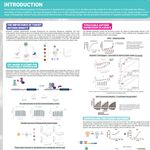Deputy Lead Scientist, UK Anaerobe Reference Unit, Public Health Wales Microbiology Cardiff, University Hospital of Wales
BIOGRAPHY

June 28, 2023 8:00 AM (PDT), 11:00 AM (EDT), 4:00 PM (BST), 5:00 PM (CEST)
Talking diagnostics: A "culture" moving to PCR
Sponsored by: Thermo Fisher Scientific
C.E. Credits:
P.A.C.E. CE
Speaker
Event Date & Time
Date: June 28, 2023
Time: 8:00 AM (PDT), 11:00 AM (EDT), 4:00 PM (BST). 5:00 PM CEST
Abstract
Laboratories performing diagnostic testing for infectious diseases have an obligation to meet the needs of multiple patient populations. With infectious disease, time it takes for reporting can have many implications, mainly in terms of infection control, prevention of spread, reduction of healthcare and other associated costs and applying the right treatment in a timely manner. In addition, laboratories must be equipped with testing mechanisms that are sensitive, specific and affordable to their operation.
Putting our focus on gastrointestinal diseases, stool culture has for long been the standard in diagnosing an infection. However, in recent years, many laboratories have started adopting PCR-based panels to test for infections with gastrointestinal pathogens. But what would be a good way to transition from stool culture to PCR?
With molecular testing being adopted as the first stop for testing for many infectious diseases, it is important to discuss best practices and how introducing molecular testing for gastrointestinal infections can allow laboratories to operate efficiently, while at the same time fulfilling the needs of the public. Join us for a discussion with Dr Michael Perry, Deputy Lead Scientist at the UK Anaerobe Reference Unit, Public Health Wales Microbiology Cardiff, to learn from his experience leading an important laboratory and what best practices can by adopted for laboratorians looking to transition from culture to molecular diagnostics.
Learning Objectives
- Identify the differences, advantages, and disadvantages of stool culture and PCR diagnostics
- Demonstrate how to effectively transition from culture to PCR
- Identify how can laboratories increase their readiness to respond to outbreaks
Webinars will be available for unlimited on-demand viewing after live event.
Labroots is approved as a provider of continuing education programs in the clinical laboratory sciences by the ASCLS P.A.C.E. ® Program. By attending this webinar, you can earn 1 Continuing Education credit once you have viewed the webinar in its entirety.
You May Also Like
DEC 10, 2024 | 9:00 AM
To-date, proteomic analysis has been severely limited in scale and resolution. Analyzing protein samples using an intact, single-molecule approach holds th...
APR 21, 2025 | 1:00 PM
C.E. CREDITS
Routine coagulation assays are widely performed in laboratories and provide valuable information to the patient’s overall clinical picture. It’s important for laboratorians to kn...
Speaker:
Malissa S Norfolk, MBA, PMP, MLS(ASCP)ᶜᵐSHᶜᵐ
FEB 25, 2025 | 1:00 PM
C.E. CREDITS
Quality efforts in the clinical laboratory are always under the microscope- a hyper-focus for laboratorians from start to finish. Recognizing the external factors that affect hemostasis test...
Speaker:
Rae Kerlin, BS, MLS (ASCP), NCA
APR 02, 2025 | 11:00 AM
Join this year's poster presenters in the Poster Hall during the Poster Networking Hour, Wednesday, September 20th, from 10:00 AM –11:00 AM PDT , to chat live about their posters a...
MAR 19, 2025 | 11:30 AM
Join this year's poster presenters in the Poster Hall during the Poster Networking Hour, Wednesday, March 5th, from 10:00 –11:00 AM PDT , to chat...
Loading Comments...
Please update your information
Certificate of Attendance
Thank you for choosing Labroots. Please note that a Certificate of Attendance does NOT count towards Continuing Education Credits.
DOWNLOAD CERTIFICATE
DOWNLOAD CERTIFICATE
You must watch the entire webinar to receive your certificate of attendance.
You must attend the event before receiving your certificate of attendance.
You must register for the event first.
Certificate is no longer available for this event.
You must be logged in to retrieve your certificate.




